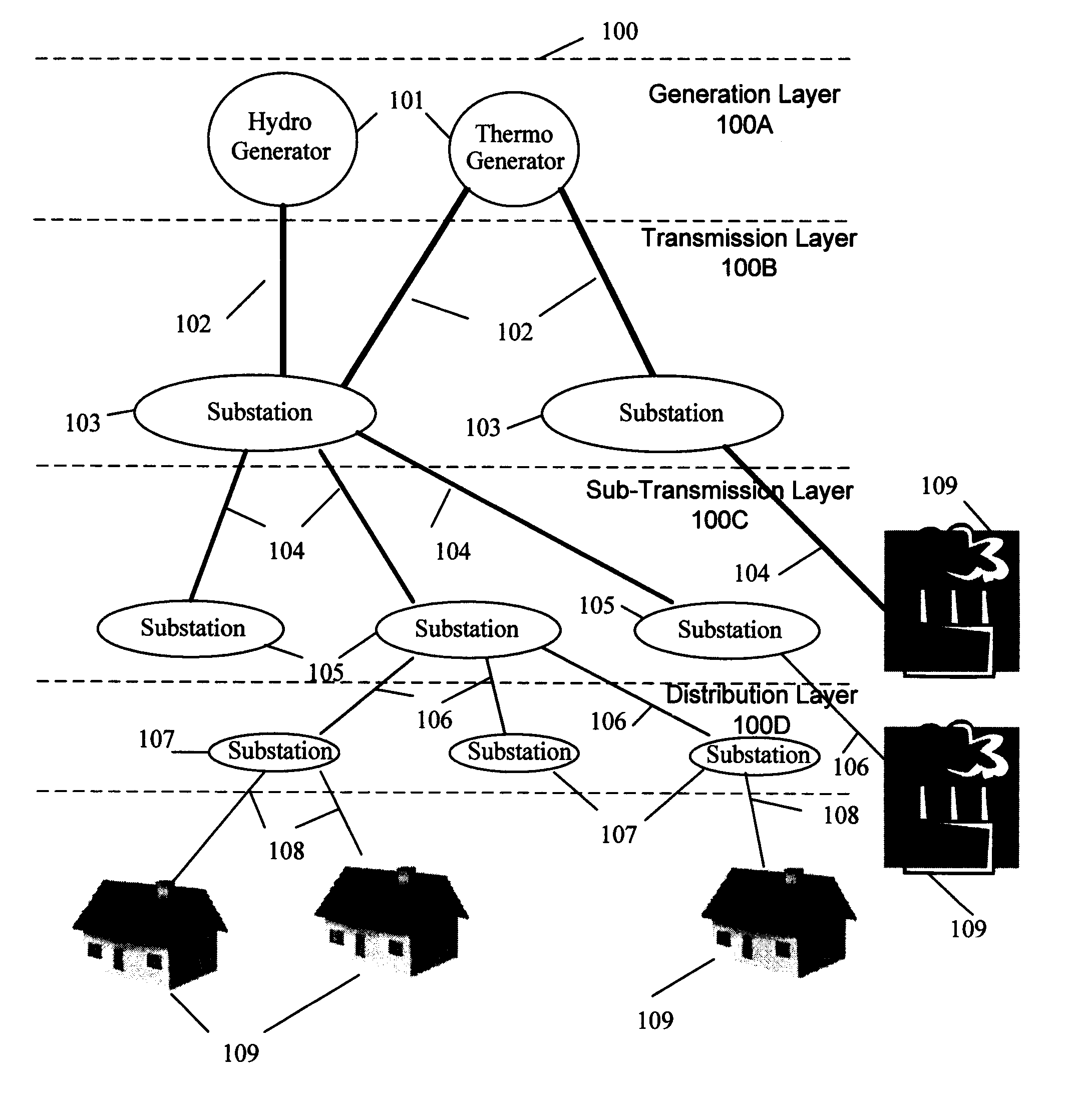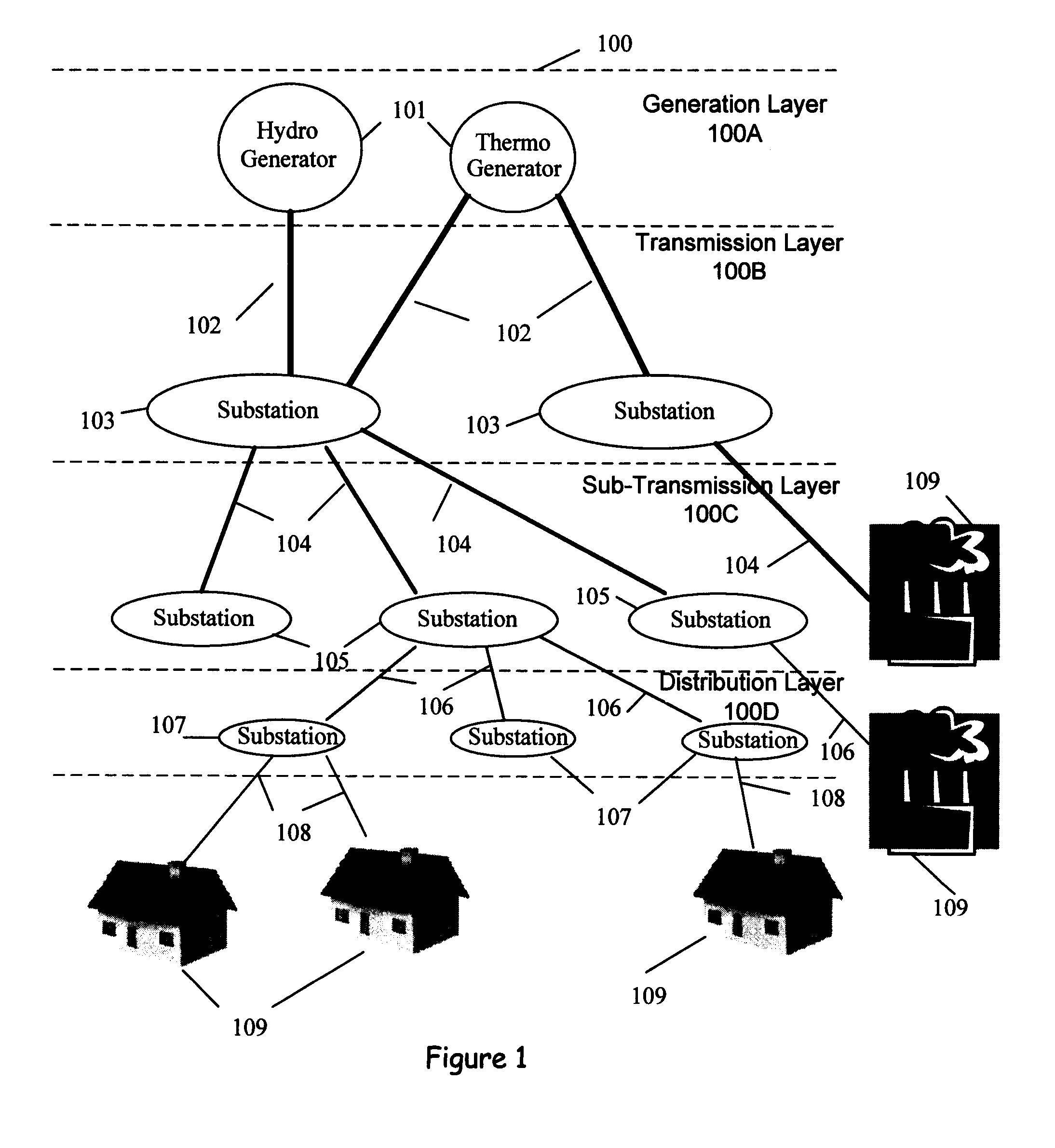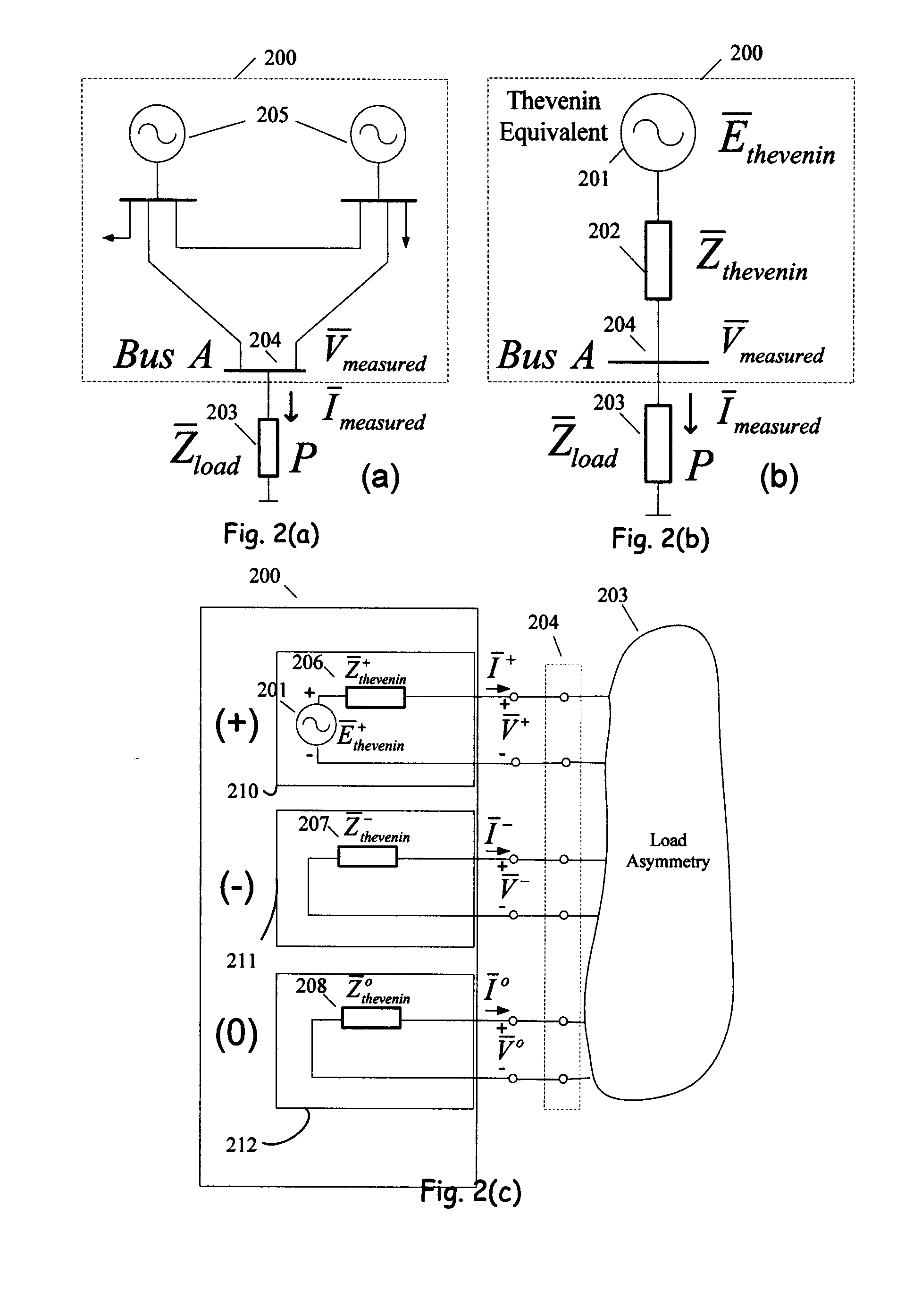Method and system for protecting an electrical power transmission network
a technology for electrical power transmission networks and protection methods, applied in the direction of electric vehicles, moving iron instruments, instruments, etc., can solve the problems of brownouts, low voltage, and a large number of users to a large number of potential sources of network problems, and achieve the effect of determining the stability of the network
- Summary
- Abstract
- Description
- Claims
- Application Information
AI Technical Summary
Benefits of technology
Problems solved by technology
Method used
Image
Examples
example
Calculating the Voltage Stability Indicators
[0109]FIGS. 5 and 6 present data from computer-simulation of the network 200 shown in FIG. 2a. A simulated power-voltage (PV) curve 501 is shown in FIG. 5. The voltage in the PV curve 501 is the positive sequence measured voltage and the power is determined based on the positive sequence measured voltage and the positive sequence measured current. Operating points a, b, . . . j on PV curve 501 correspond to changing values of the active power, P, of load 203 on substation bus 204. Table 5 in FIG. 5 provides a number of computer-simulated quantities associated with operating points a, b, . . . j on PV curve 501. The simulation was conducted using a power factor (pf) at a constant 0.98 lagging for load 203 and an imbalance of 1.5% among load impedances connected to phase a, phase b, and phase c. Using circuit simulation, phase voltages and currents at the bus 204 were calculated (step 401). A symmetrical components transformation was then ap...
PUM
 Login to View More
Login to View More Abstract
Description
Claims
Application Information
 Login to View More
Login to View More - R&D
- Intellectual Property
- Life Sciences
- Materials
- Tech Scout
- Unparalleled Data Quality
- Higher Quality Content
- 60% Fewer Hallucinations
Browse by: Latest US Patents, China's latest patents, Technical Efficacy Thesaurus, Application Domain, Technology Topic, Popular Technical Reports.
© 2025 PatSnap. All rights reserved.Legal|Privacy policy|Modern Slavery Act Transparency Statement|Sitemap|About US| Contact US: help@patsnap.com



